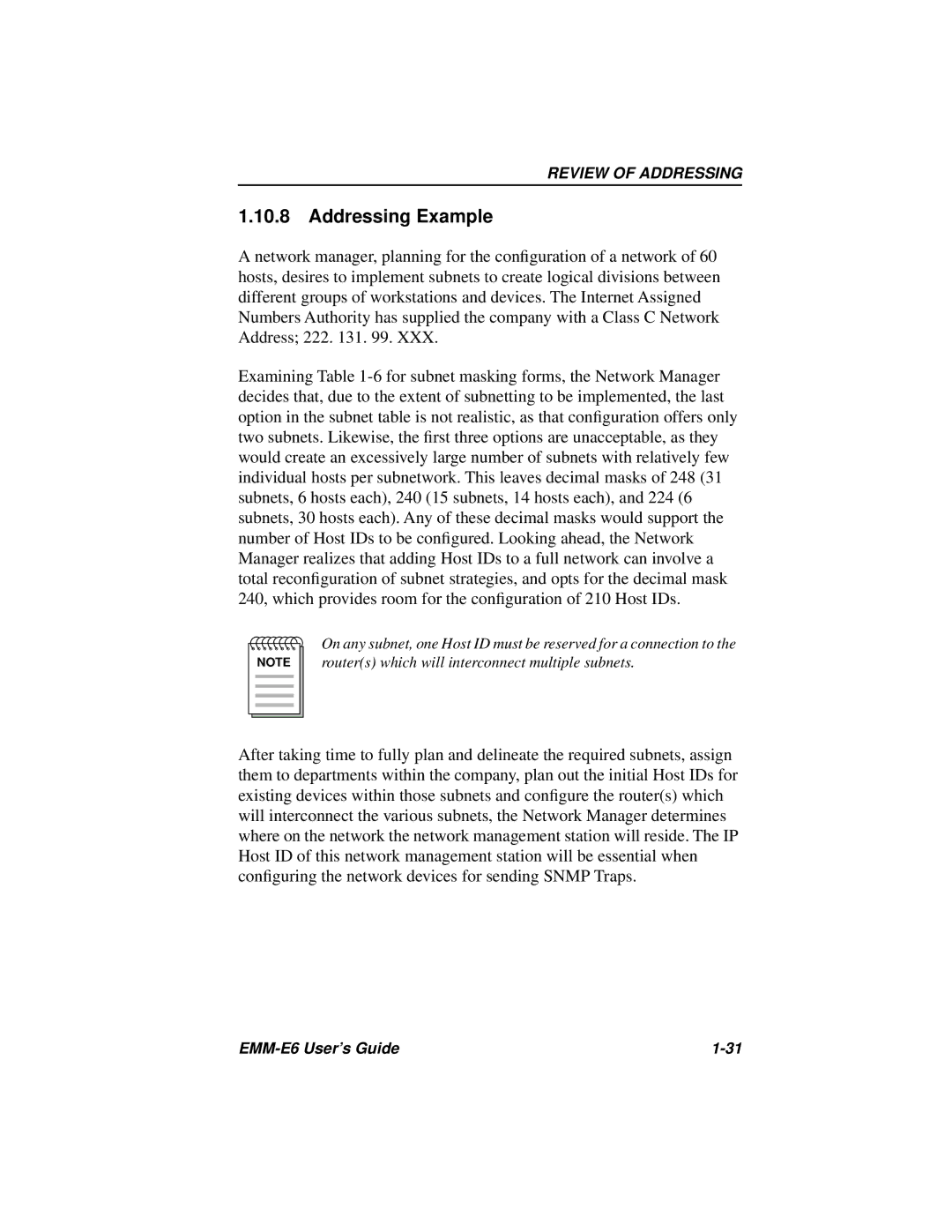
REVIEW OF ADDRESSING
1.10.8Addressing Example
A network manager, planning for the configuration of a network of 60 hosts, desires to implement subnets to create logical divisions between different groups of workstations and devices. The Internet Assigned Numbers Authority has supplied the company with a Class C Network Address; 222. 131. 99. XXX.
Examining Table
NOTE |
On any subnet, one Host ID must be reserved for a connection to the router(s) which will interconnect multiple subnets.
After taking time to fully plan and delineate the required subnets, assign them to departments within the company, plan out the initial Host IDs for existing devices within those subnets and configure the router(s) which will interconnect the various subnets, the Network Manager determines where on the network the network management station will reside. The IP Host ID of this network management station will be essential when configuring the network devices for sending SNMP Traps.
|
